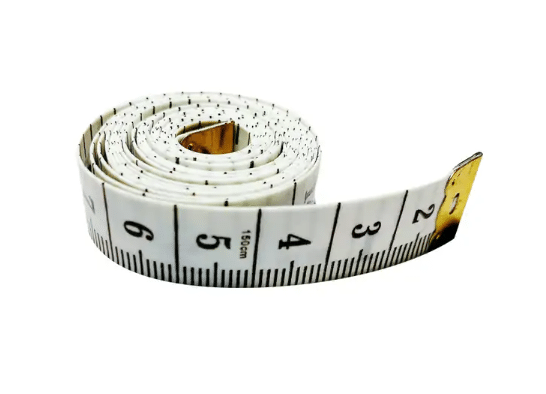A measuring tape is an important inspection tool used in quality control. Here let’s go over its unit, uses, and how to read it.

What is A Measuring Tape?
A measuring tape is a tool used to measure distances or lengths. It typically consists of a long, flexible strip of material, usually made of plastic or cloth, with markings for inches, centimeters, or both. The tape is usually housed in a compact case with a retractable spring mechanism that allows the tape to be easily withdrawn and then returned to its container. Measuring tapes come in various lengths, ranging from a few feet to over 30 feet, and may have additional features such as magnetic tips or self-locking brakes to hold the tape in place. Measuring tapes are commonly used in construction, woodworking, and other trades, as well as for everyday household tasks such as measuring furniture or curtains.
How to Read A Measuring Tape?
- Take the tape measure out of its case and extend it fully, making sure that the tape is not twisted or bent.
- Identify the units of measurement on the tape. In most cases, the tape will have markings for both inches and centimeters, with each unit of measurement indicated by a different numbering system.
- Look for the longest marking on the tape. This should be the number closest to the end of the tape measure and represents the whole length or distance being measured.
- Locate the second-longest marking on the tape, which should be halfway between the longest marking and the next shortest marking. This represents half the length or distance being measured.
- Look at the shortest markings on the tape. These are typically spaced at intervals of either 1/16 inch or 1/32 inch, depending on the tape. Locate the marking that lines up with the end of the object being measured to determine the fractional part of the measurement.
For example, if the longest marking on the tape measures 20 inches, the second-longest marking measures 10 inches, and the shortest marking lines up with the 1/8 inch mark on the object being measured, the total measurement would be 20 1/8 inches.
Unit of Measuring Tape
The unit of a measuring tape typically depends on the region or country where it is used. In the United States, the primary unit of measurement for measuring tapes is inches, with fractional increments such as 1/16 inch or 1/32 inch. However, some tapes may also include markings in feet or yards. In countries that use the metric system, the primary unit of measurement for measuring tapes is centimeters, with markings for millimeters or meters as well. Some measuring tapes may include both inch and centimeter markings to cater to both systems. It’s important to note that when using a measuring tape, you should be aware of the unit of measurement to avoid errors in measurement or confusion.
When using a measuring tape, do you start at 0 or 1?
When using a measuring tape, you start at the 0 or beginning of the tape to take accurate measurements. The end of the tape measure, also known as the hook, is typically loosened, enabling it to be placed against the item you want to measure. Because the hook itself has a thickness, it should fall naturally in line with zero, which is the start of the tape’s scale. By placing the hook against the item you want to measure at zero, you can be assured of a precise measurement from the start of the object. Starting any point other than the beginning of the tape or zero can lead to errors in measurement.
Smallest and largest unit on a measuring tape
The smallest and largest units on a measuring tape can vary depending on the specific tape and the manufacturer. In general, the smallest unit on a measuring tape is usually 1/16 inch or 1 millimeter, while the largest unit can be several feet or meters. Some measuring tapes may have markings down to 1/32 inch or 0.5 millimeters for greater precision, while others may include larger units such as feet or yards in addition to the standard smaller units.
How Is Measuring Tape Used in Quality Control?
- Measuring dimensions: Quality control personnel use measuring tapes to accurately measure the dimensions of a product or component against a predetermined set of specifications. This ensures that the product or component is produced to the required size and can be included in the final product.
- Checking tolerances: Measuring tapes can be used to check the tolerance levels of a product or component to ensure that it meets the required specifications. Tolerances indicate the acceptable degree of variation in a product’s dimensions and are important in ensuring that the final product is consistent and reliable.
- Identifying defects: Measuring tapes can be used to identify defects in a product or component. For example, if a product is supposed to have a consistent thickness but measures differently in different parts, this may indicate a defect in the product that needs to be addressed.
- Recording measurements: Measuring tapes can be used to record measurements of products or components that are inspected in quality control. These measurements can then be compared against previous measurements to identify trends and ensure that quality control standards are being maintained.